Rural, historic mission churches seek support

SAN PEDRO, Colo. — Members of a historic mission in rural Colorado say their church is in need of about half a million dollars worth of work. But parishioners and the Diocese are at a stalemate over how to proceed — and sustain — the much-needed repairs.
They’re not alone. Across southern Costilla County, the future maintenance of six auxiliary Catholic missions is in question after the Diocese of Pueblo issued a statement last week acknowledging it has become “increasingly difficult” to care for the historic buildings in the long term, citing low attendance and high costs.
Upheld for generations as foundational to their communities, the predominantly adobe churches of Iglesia de San Pedro y San Pablo, Iglesia de la Inmaculada Concepción in Chama, Sacred Heart Mission in Garcia, Capilla de San Isidro in Los Fuertes, Capilla de Viejo San Acacio and Iglesia de San Francisco de Assi were constructed beginning in the late 1800s through the early 1900s. Each structure heralds one of Colorado’s early village settlements along major creeks of the Culebra watershed. Though they have been promoted as a tourist attraction in recent decades, the buildings need ongoing repair — some more dire than others.
“It could go today, it could go tomorrow,” said Carlos Atencio, whose ancestors helped build Iglesia de San Pedro y San Pablo (Mission of St. Peter and St. Paul) and have attended the church for generations.
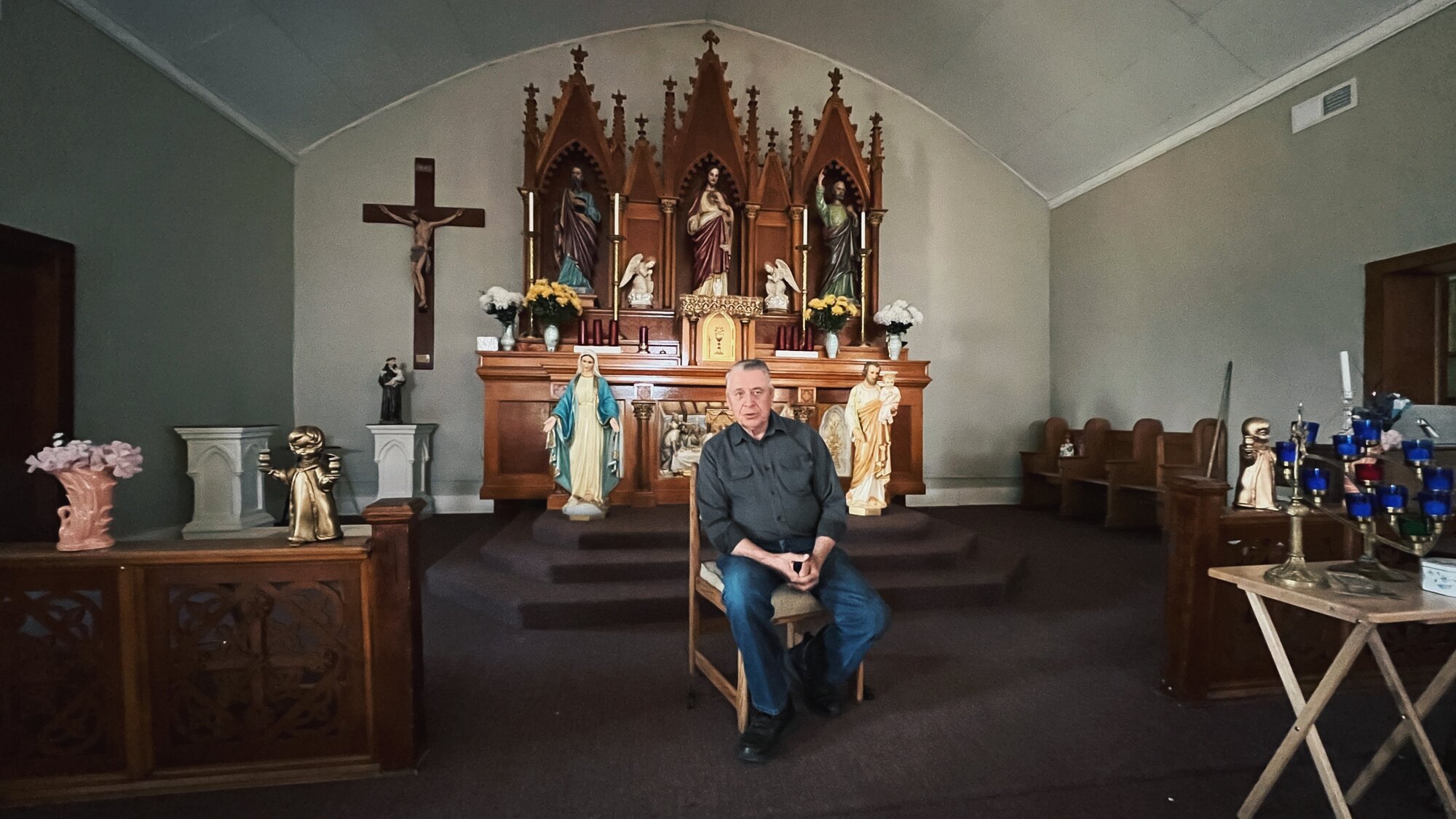
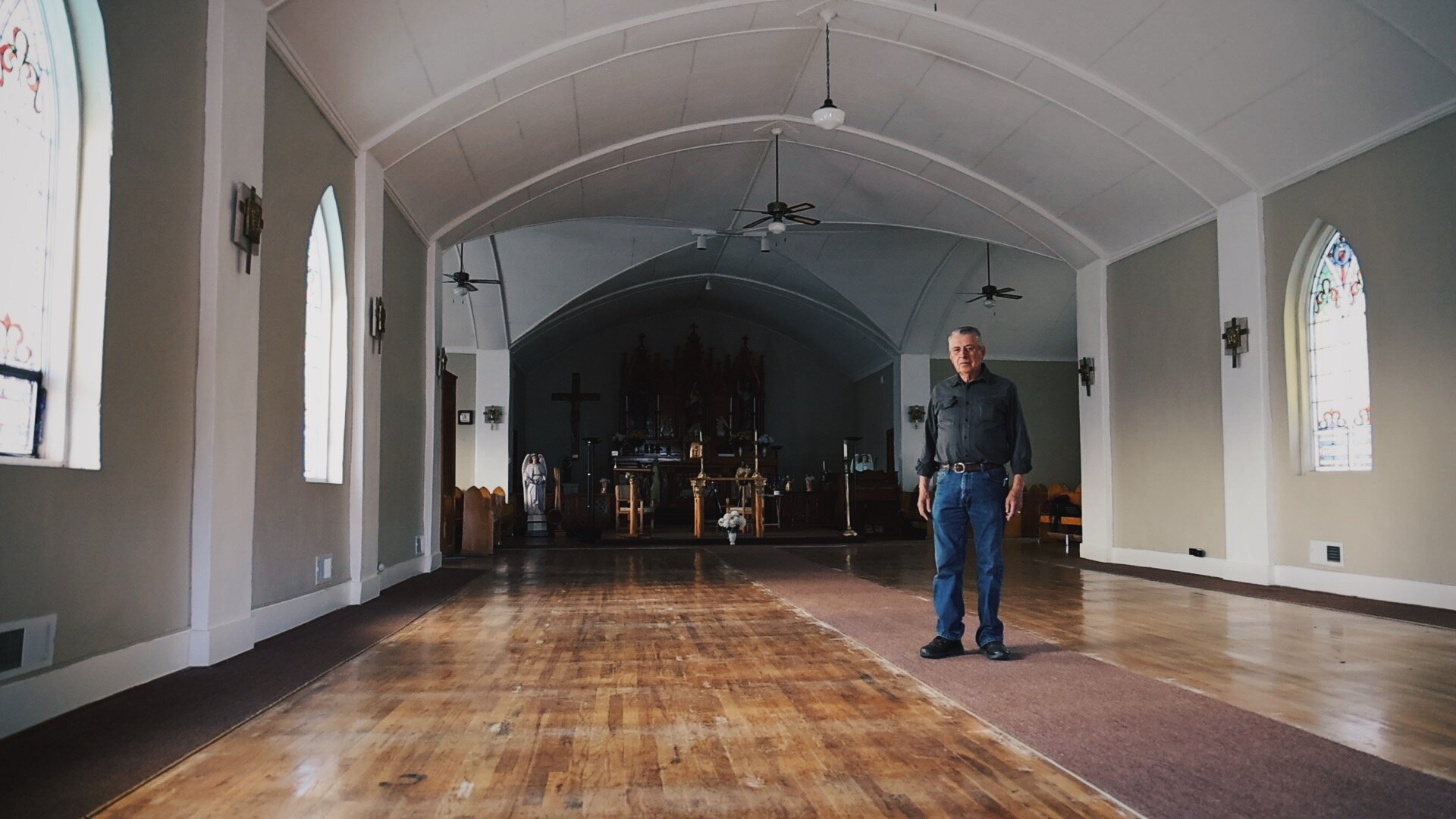
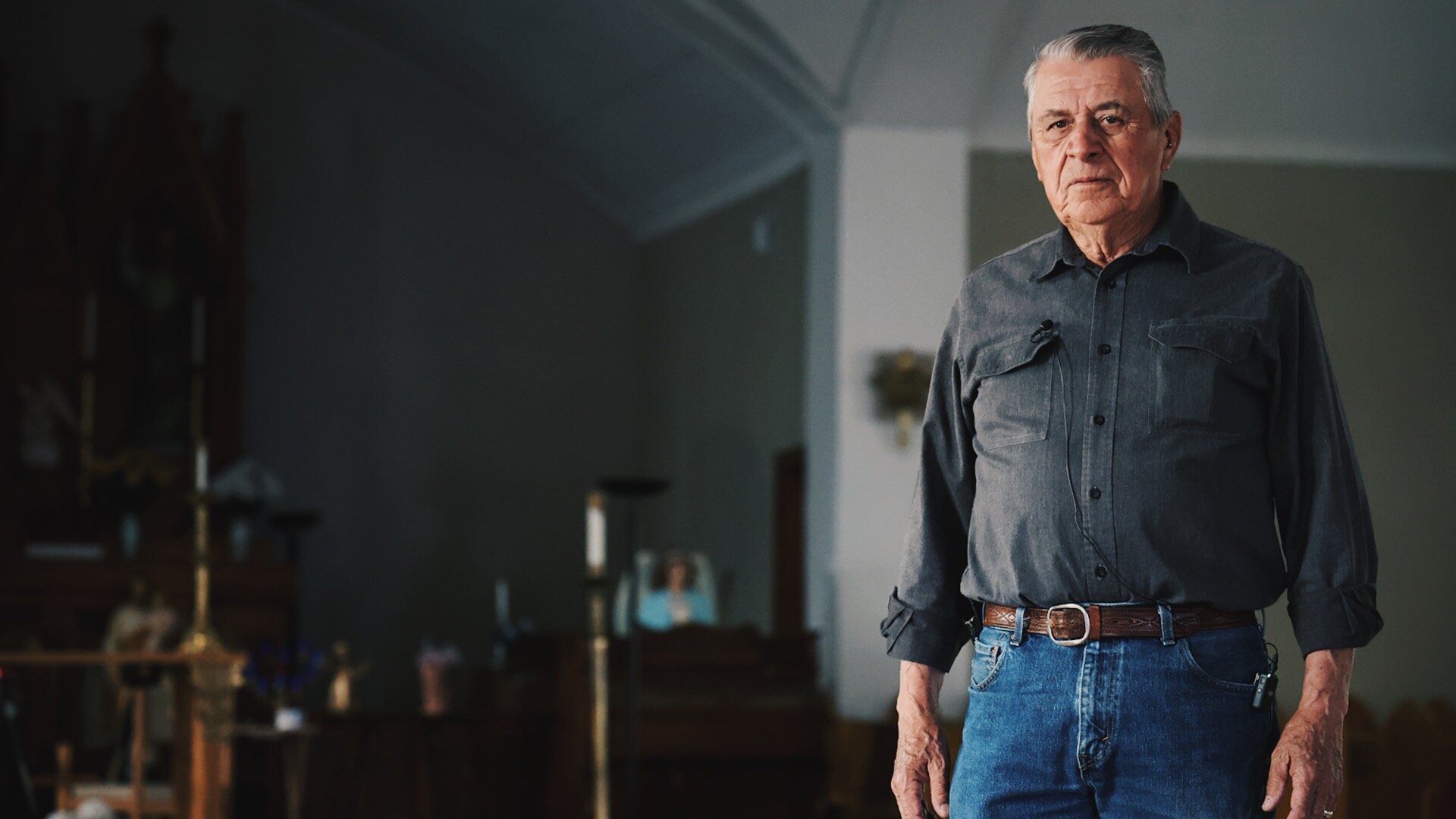
“This place means everything to us,” said Atencio. “It is us. What else can I say? The church has always been so important to the community. It's part of our culture. It’s part of our history.”
First constructed in the late 1800s, the San Pedro y San Pablo church was rebuilt in 1915 and again in 1932 following fires. Today, the adobe church, which halted weekly services in the 1980s, is visibly crumbling. Over the years, cracks have appeared in the walls and along the front of the church. Stucco falls off in pieces, and holes have eroded at the seams. Inside, molding and floorboards show signs of the building settling against no foundation.
“It’s very sad to see it in the condition that it's in,” Atencio said.
To make lasting repairs, Atencio explained, the church must be partially taken down, a foundation created, then rebuilt and re-stuccoed.
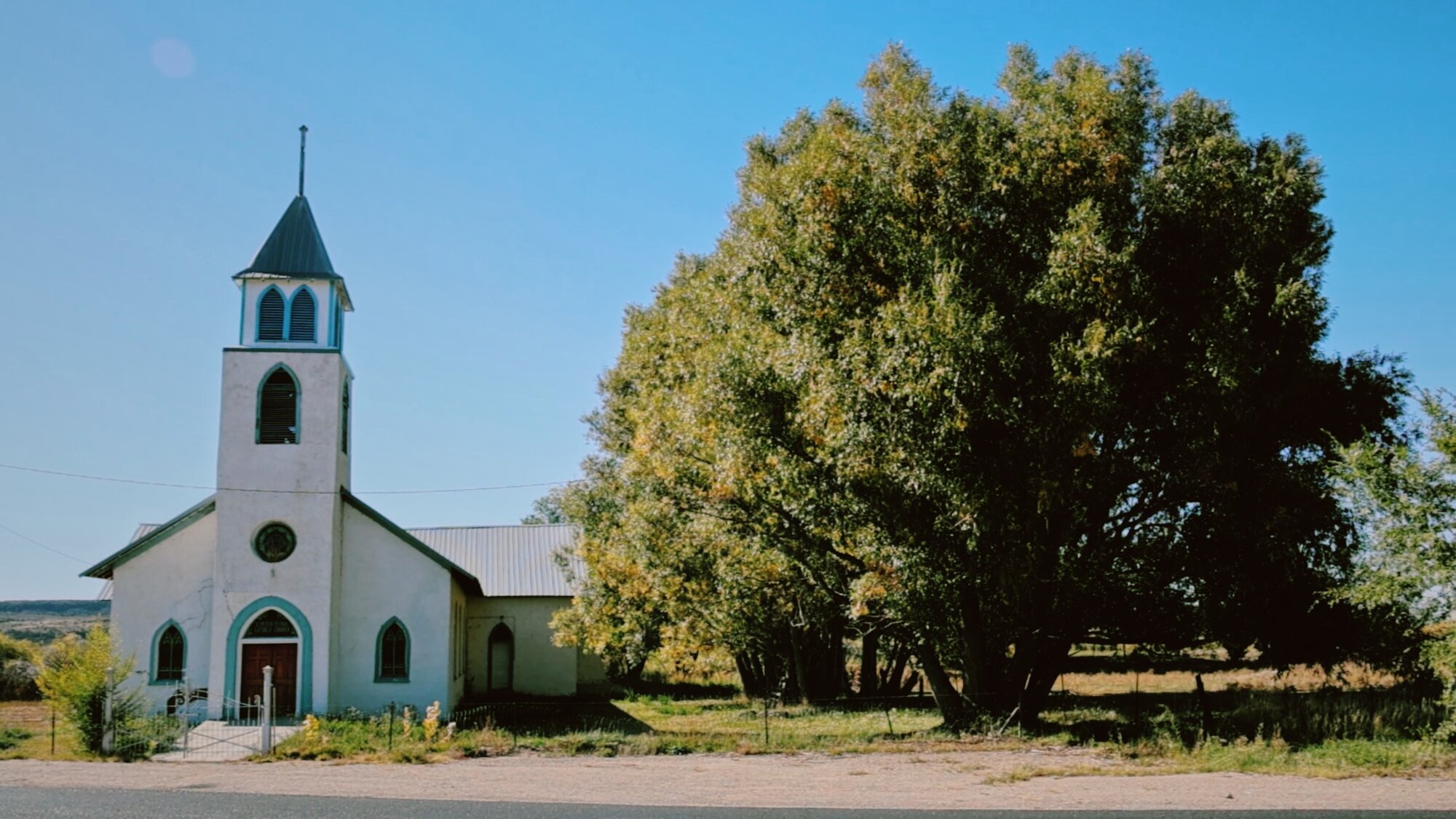
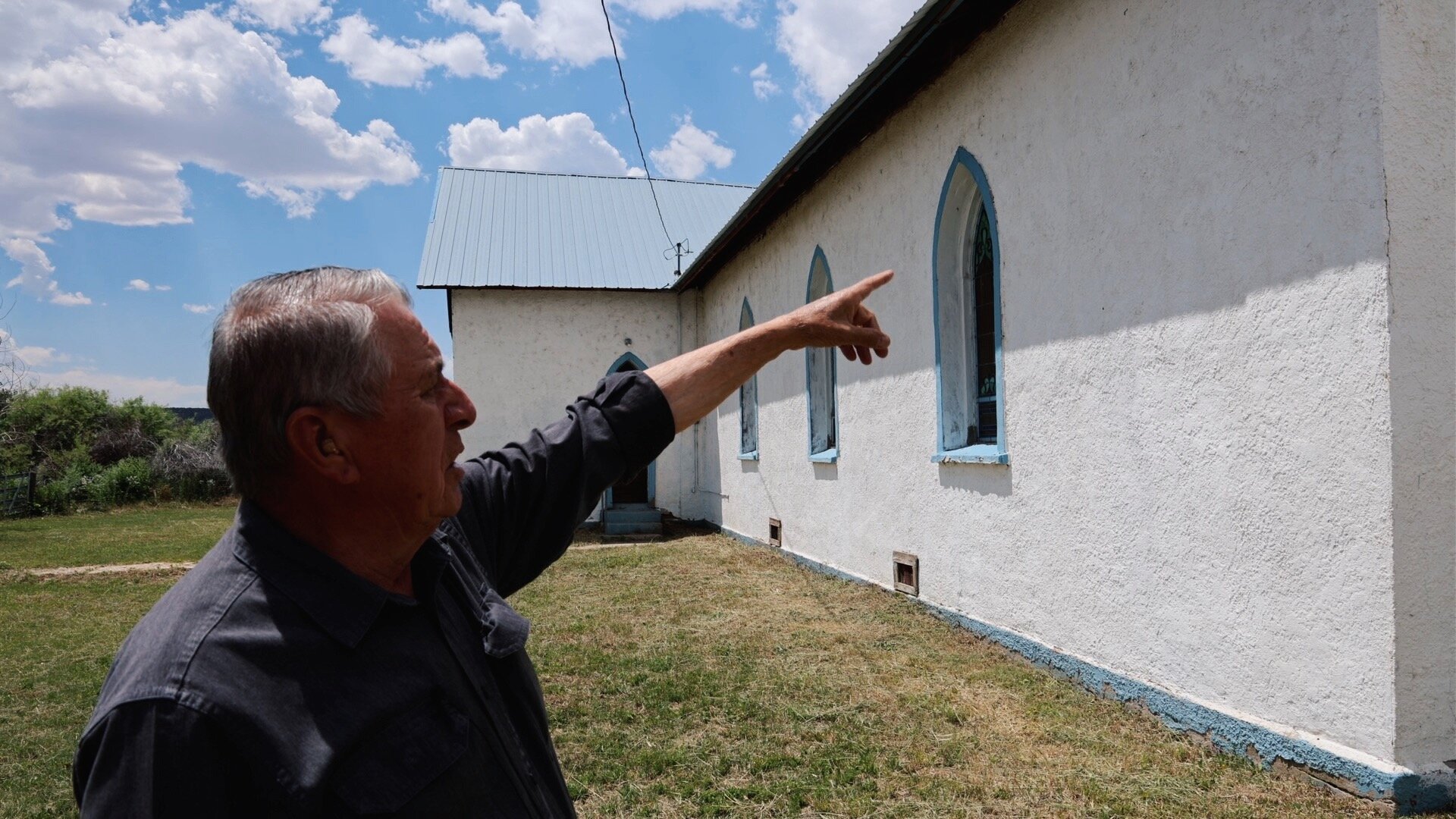
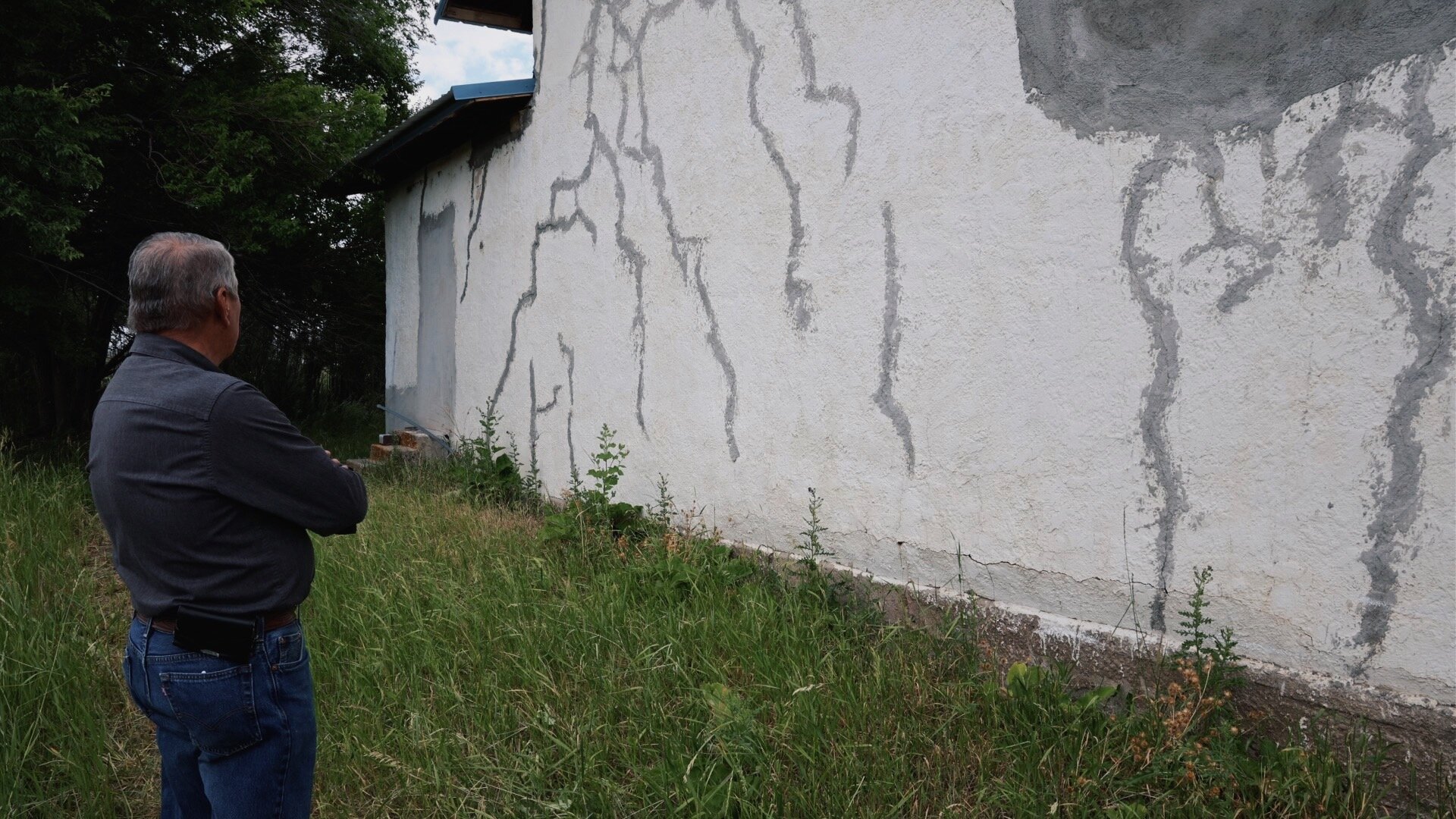
Acknowledging the extensive work necessary to maintain state safety requirements and codes, Bishop Stephen Berg said in a statement on behalf of the Diocese of Pueblo that “the safety of parishioners is of greatest concern” and that he has “assigned a team to investigate the concerns of St. Peter and St. Paul, and other missions, to evaluate their structural and safety issues.”
Locals say support may not come quickly enough.
“We don’t have the will from our leadership, the Diocese, to take care of the missions,” said Charlie Jaques, who was an altar server at San Pedro y San Pablo church. His parents, grandparents, and great-grandparents attended mass here.
“The churches used to be full. Now they’re not. The Diocese used to support the missions. Now they don’t. That’s pretty much it,” Jaques explained.
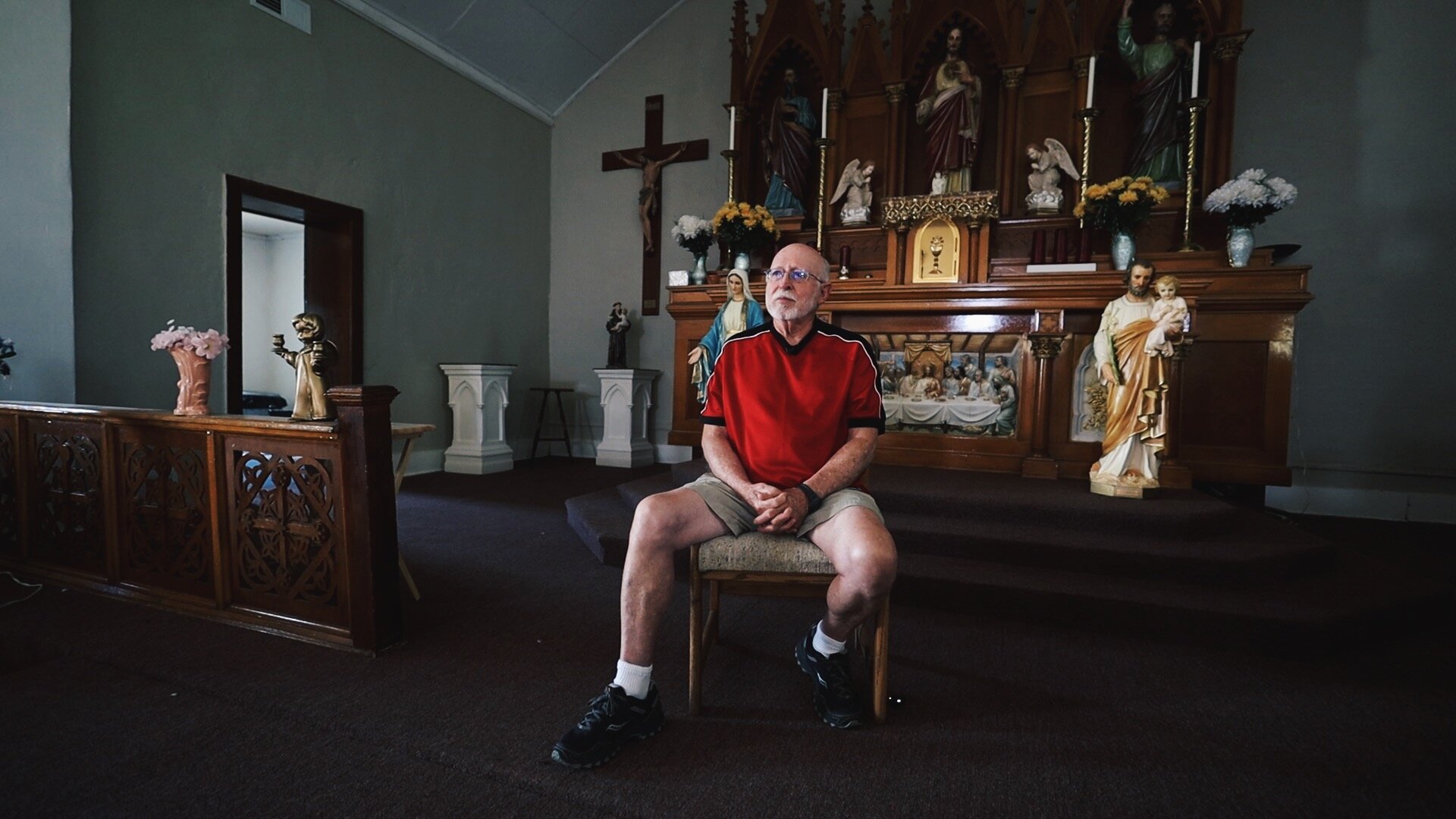
Years ago, as local populations declined, the Diocese consolidated mass from the missions to nearby San Luis and Fort Garland — and resources also shifted. Today, the villages host mass once a month, if at all.
Parishioners of San Pedro y San Pablo said they realized the Diocese may not be supportive of maintaining the structure when they denied a $15,000 grant secured by the community to proactively remove and preserve the building’s stained-glass in case the church should fall.
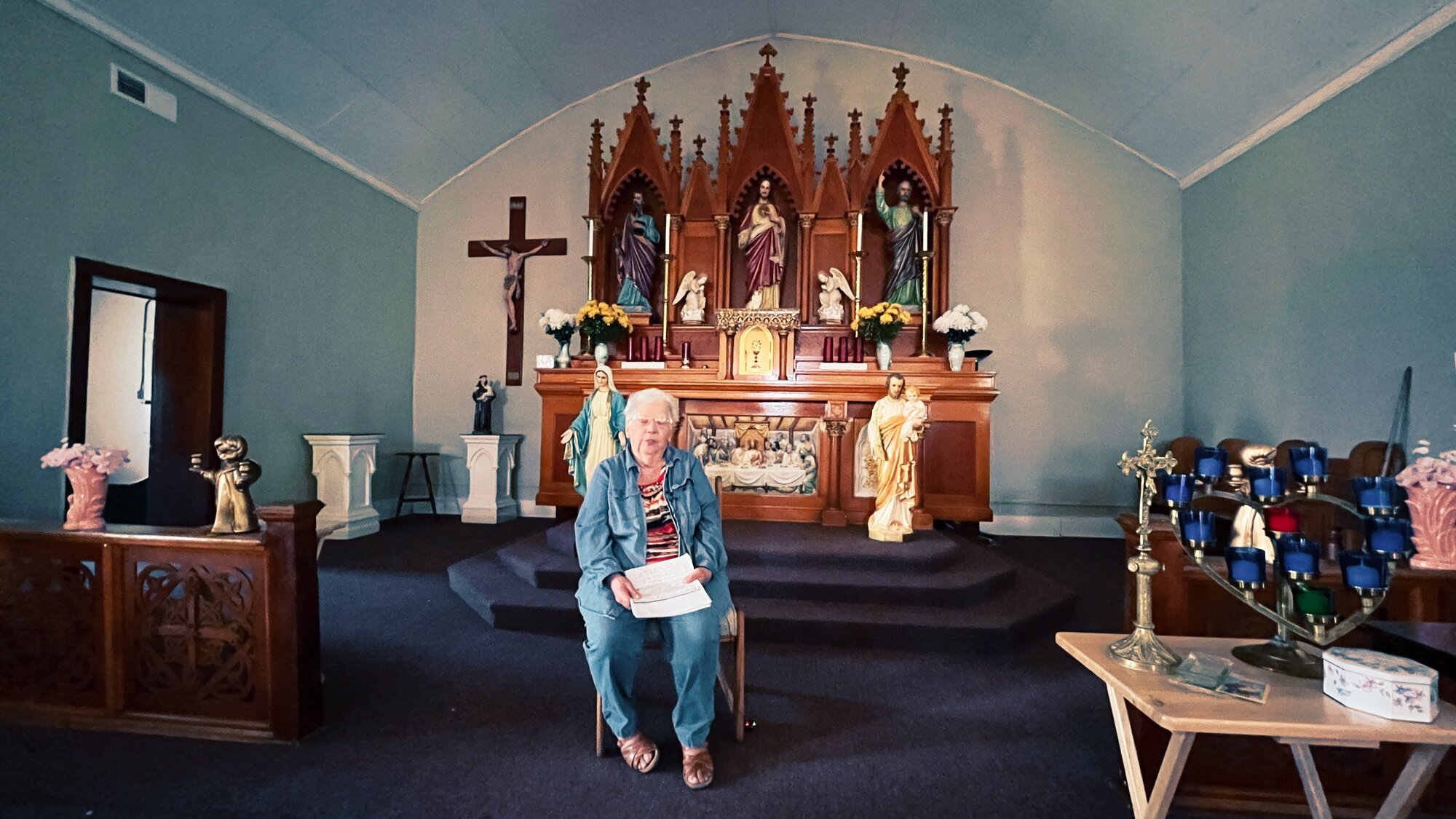
“It seems that the problem is that the bishop will not accept any grants from government agencies,” said Maria C. Martinez of San Pedro.
Locals balked again in August when a rumor circulated that the church would be demolished.
The Sangre de Cristo Parish of San Luis stated publicly in August that there has been no decision to demolish the church. “That question has not even been asked,” a statement from the Parish reads, “not by your Finance Council, not by the priests, and not by the bishop.”
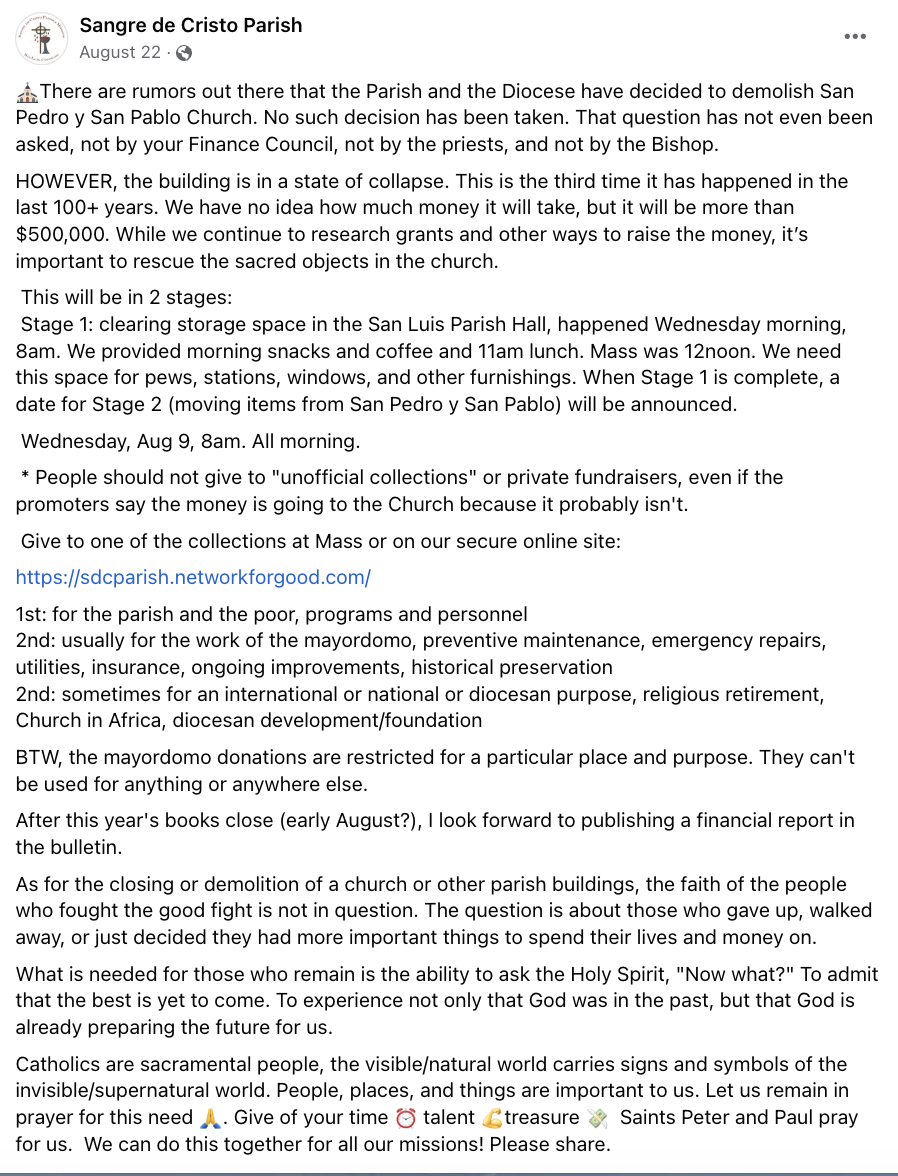
Statement from the Sangre de Cristo Parish in San Luis on Facebook, dated August 22, 2023.
In San Pedro and San Pablo, community members were determined to raise funds to repair the church on their own. The community started a GoFundMe campaign.
“If the Diocese can't afford to fix the church — or they won’t — then it is up to the community to try and raise the funds to do so,” said Martinez.
The Parish responded to the crowd-funding campaign publicly, saying they prefer parishioners not donate to private initiatives to make direct repairs. Instead, the Parish asked community members to donate time, talent and funding directly to the Parish. In a Facebook post, the Parish explained that donations they receive go toward programs and personnel, then to the caretakers of the churches “for preventive maintenance, emergency repairs, utilities, insurance, ongoing improvements [and] historical preservation.” Church donations also go toward international, national or diocesan purposes, religious retirements, Churches in Africa, and diocesan development, the statement detailed.
The post recognized those who have contributed over the years and continued, “The question is about those who gave up, walked away, or just decided they had more important things to spend their lives and money on.”
The Parish has since worked to secure space to store sacred objects from San Pedro y San Pablo, including pews, as the building undergoes evaluation. “While we continue to research grants and other ways to raise the money, it’s important to rescue the sacred objects in the church,” the Parish stated.
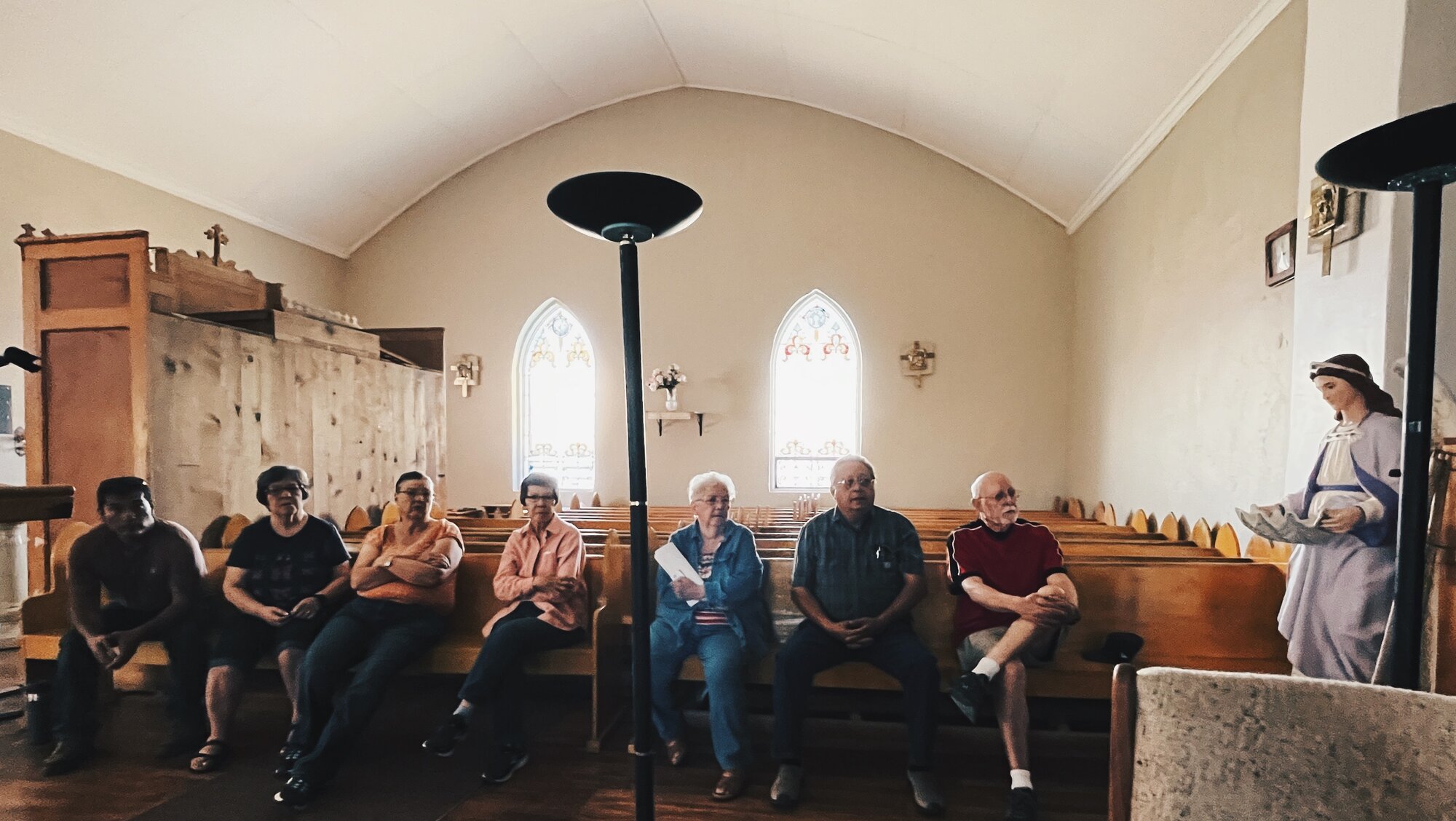
Community Support
Across the watershed, religious and spiritual buildings were established first as pobladores, the area’s first settlers, arrived from the south. They initially constructed oratorios, or prayer centers, along the watershed’s major rivers. Moradas were established in several communities as Spanish, Mexican and Native American settlers came to inhabit camps, forts and land grant outposts along Culebra, Vallejos, San Francisco, and other creeks in the mid to late 1800s.
“A lot of our ancestors came and were early settlers,” said Jacques. “Mexico was trying to protect its northern frontier.” San Pablo was built with a fort structure, but San Pedro was not, Jacques said.
“Although the existing church building is not the first, this site has some incredible history,” said Martinez, who remembers potlucks, races, and baseball games hosted by the church. “All of us have had something to do with this church. We’ve all had baptisms and marriages here.” She said the community still celebrates St. Peter and St. Paul Day.
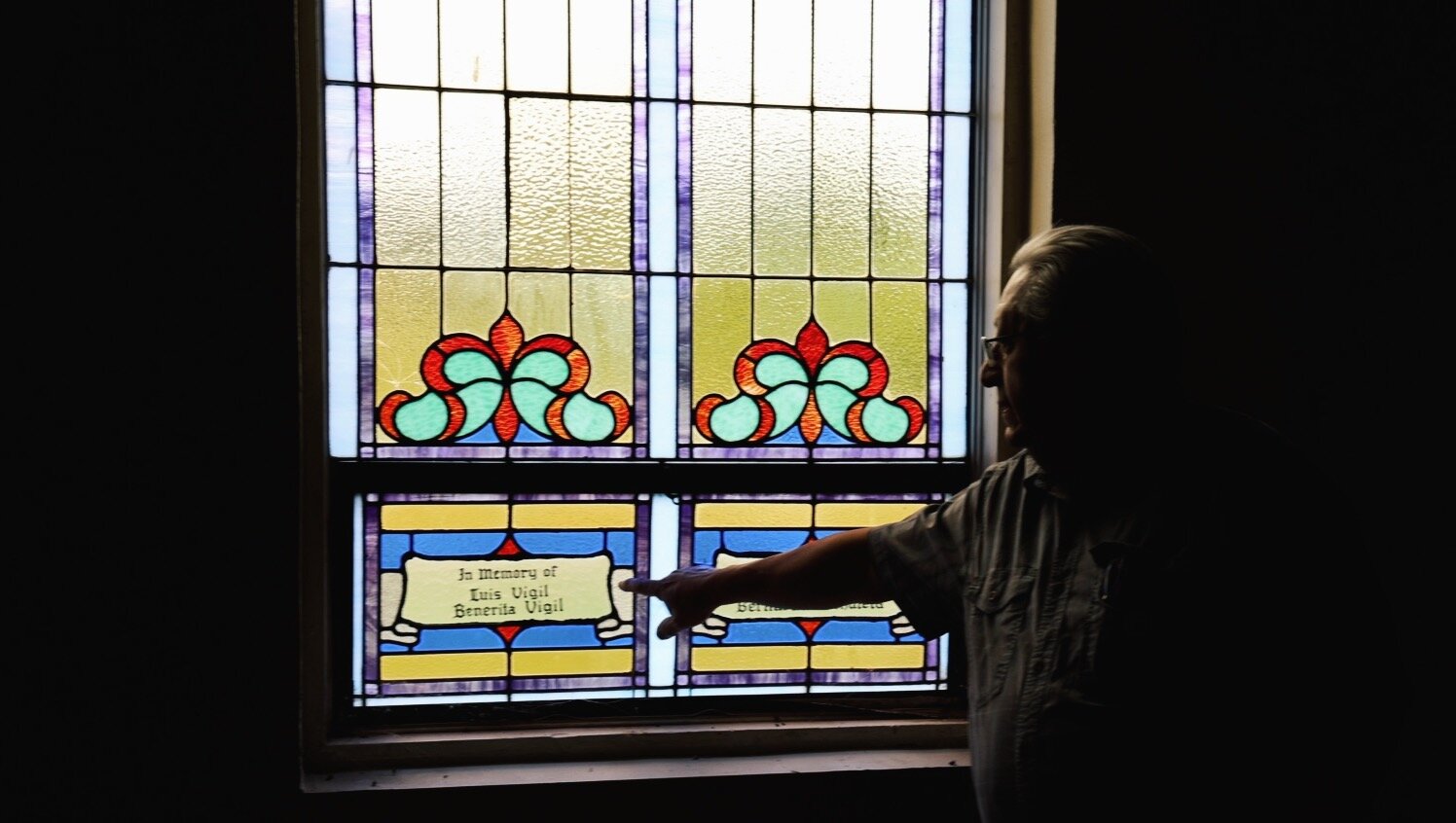
Frank Vigil’s family names are etched into the stained-glass windows, commemorating their commitment to the church through their lifetimes. Vigil said all four sets of his great-grandparents are from the community. “Maintaining this building is not a luxury for us,” he said. “This is a necessity. This is something that is very important because it's integral to who we are. It's part of us.”
Vigil grew up on stories about the church. He said mass was a time for families to gather aside from the toil of everyday life, which was difficult to sustain in the early days. “I think the church gave them hope to go through another week,” he said.
Vigil said the area should be celebrated for its contributions to the formation of the state. “This is a great part of the foundation of Colorado,” he said. “We are certainly a part of the history of this state.”
At the heart of the church’s issues is the dwindling population of the original settlement villages.
“With the movement of the Colorado population from rural to urban centers, attendance and necessary financial contributions have drastically declined,” Bishop Berg said in a statement from the Diocese of Pueblo.
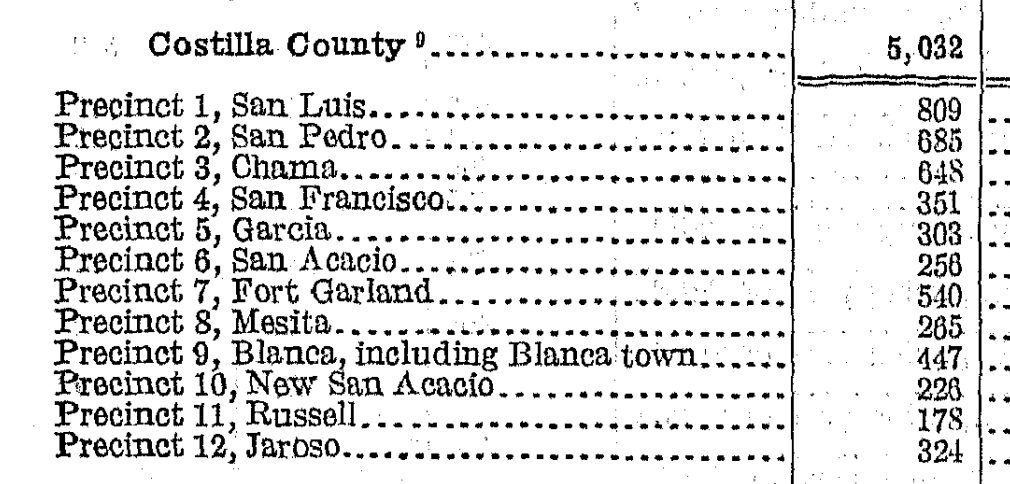
The 1920 Costilla County census.
In the early 1900s, villages had robust numbers. Many of the church structures were rebuilt, expanded or repaired significantly in the 1920s and 30s, as a steady population hit its peak. A 1940s boon accompanied the local depression-era agricultural sector, with additional economic support from WPA projects. Then, the population unraveled. Between the beginning and end of World War II, many families moved or relocated, never to return. Local veterans describe seeing a world beyond San Luis and Costilla County for the first time and comparing it to the relative economic improbability of what was waiting for them back home.
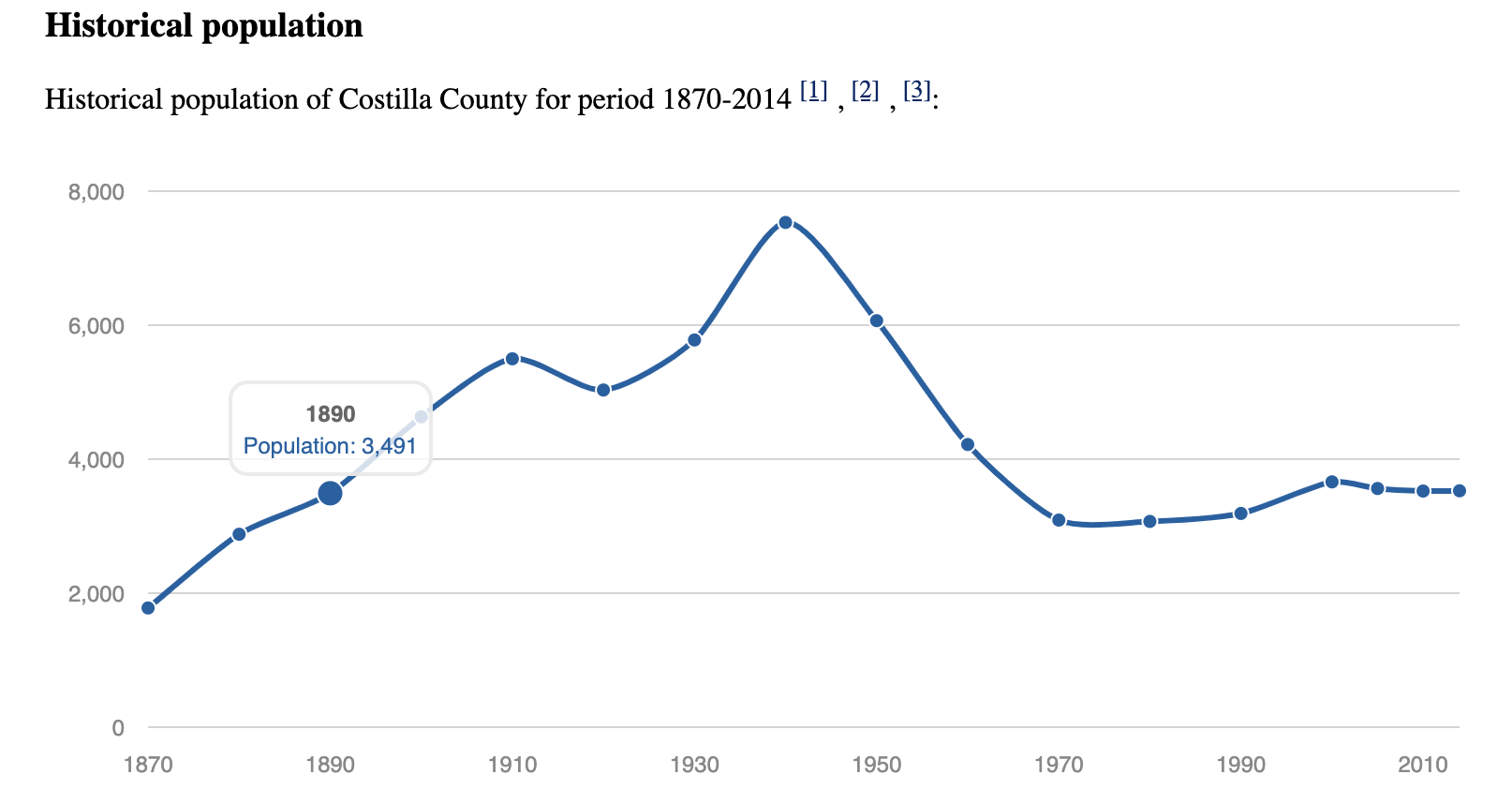
Costilla County population over time. Image: Census.gov
“I didn’t know what life was like out there until I went to college,” Vigil acknowledged. “We didn't know that we didn't have so many things.”
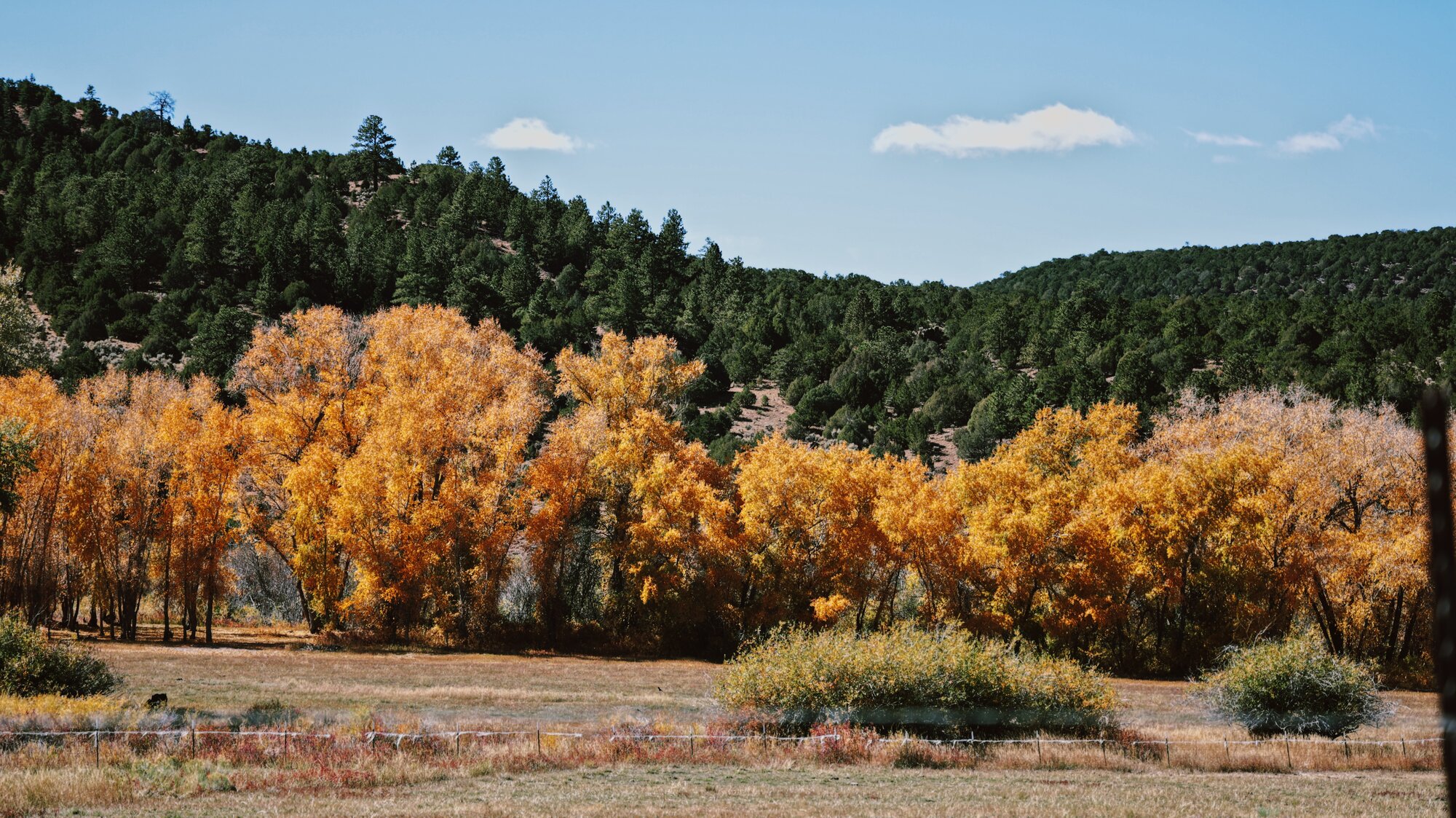
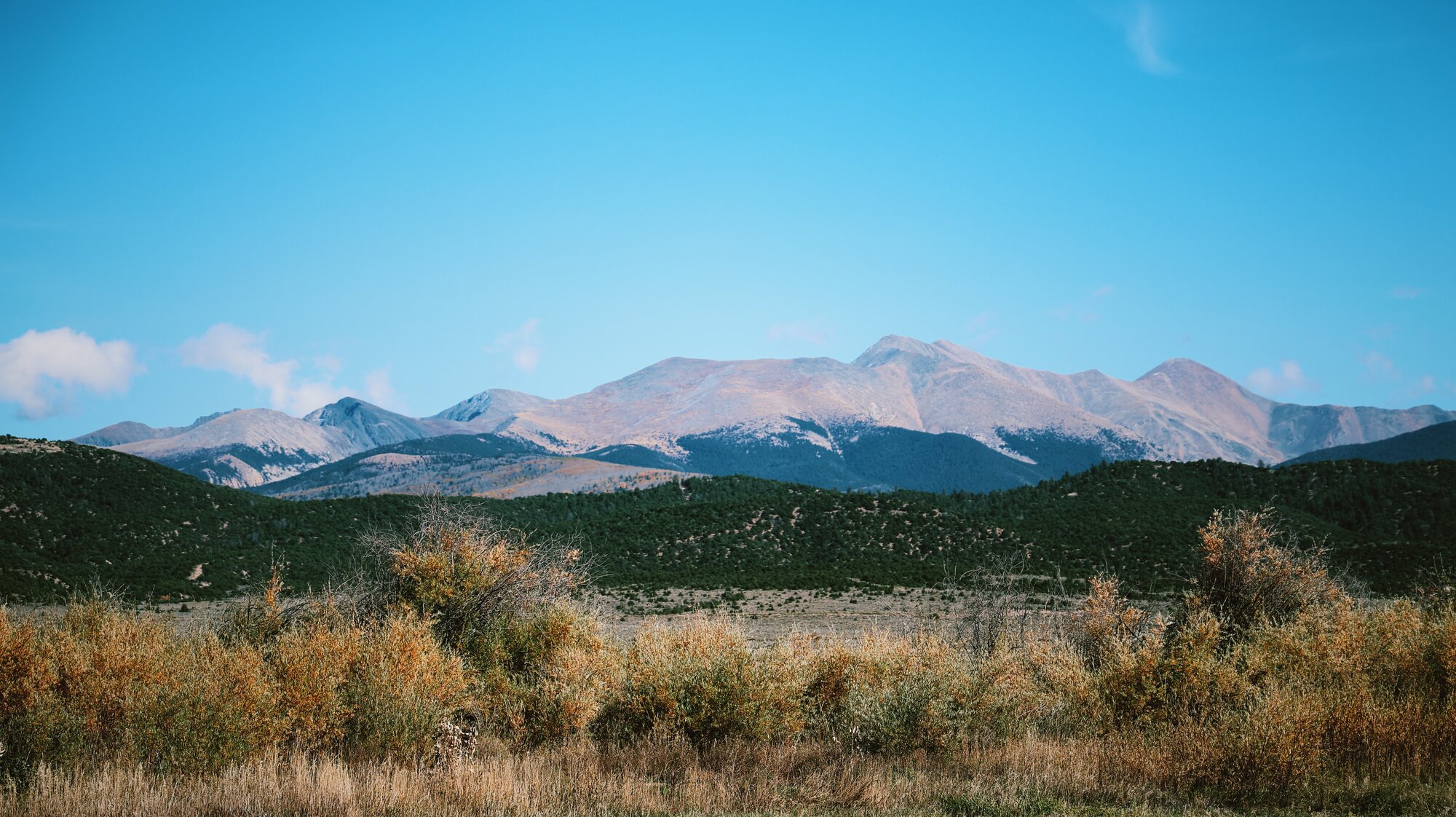
Left, a mountain stream leading to San Francisco, and right, the Culebra range.
The county experienced a steady population decline until the 1970s, with factors including access to natural resources. Reservoirs were built and canals carved out half of the water rights from the original acequia and stream systems. Restricted use of local common lands caused ranchers to lose access to swaths they’d used to graze sheep and cattle. Since the 70s, the population has stayed around the same number as it was in 1890.
[Related: “Colorado Voices: Cheap Land,” a series from Rocky Mountain PBS]
Like the church’s consolidation, village schools and post offices also centralized to San Luis. (The Chama post office closed last year, with all mail now directed through San Luis.) Today, many local landowners work in the city for decades before being able to return or retire here later in life.
“As we all know all of our Missions are in dire need of repair and upkeep. As populations have declined, folks have gotten older and subsequent generations are not quite sure how to contribute,” the Sangre de Cristo Parish stated online.
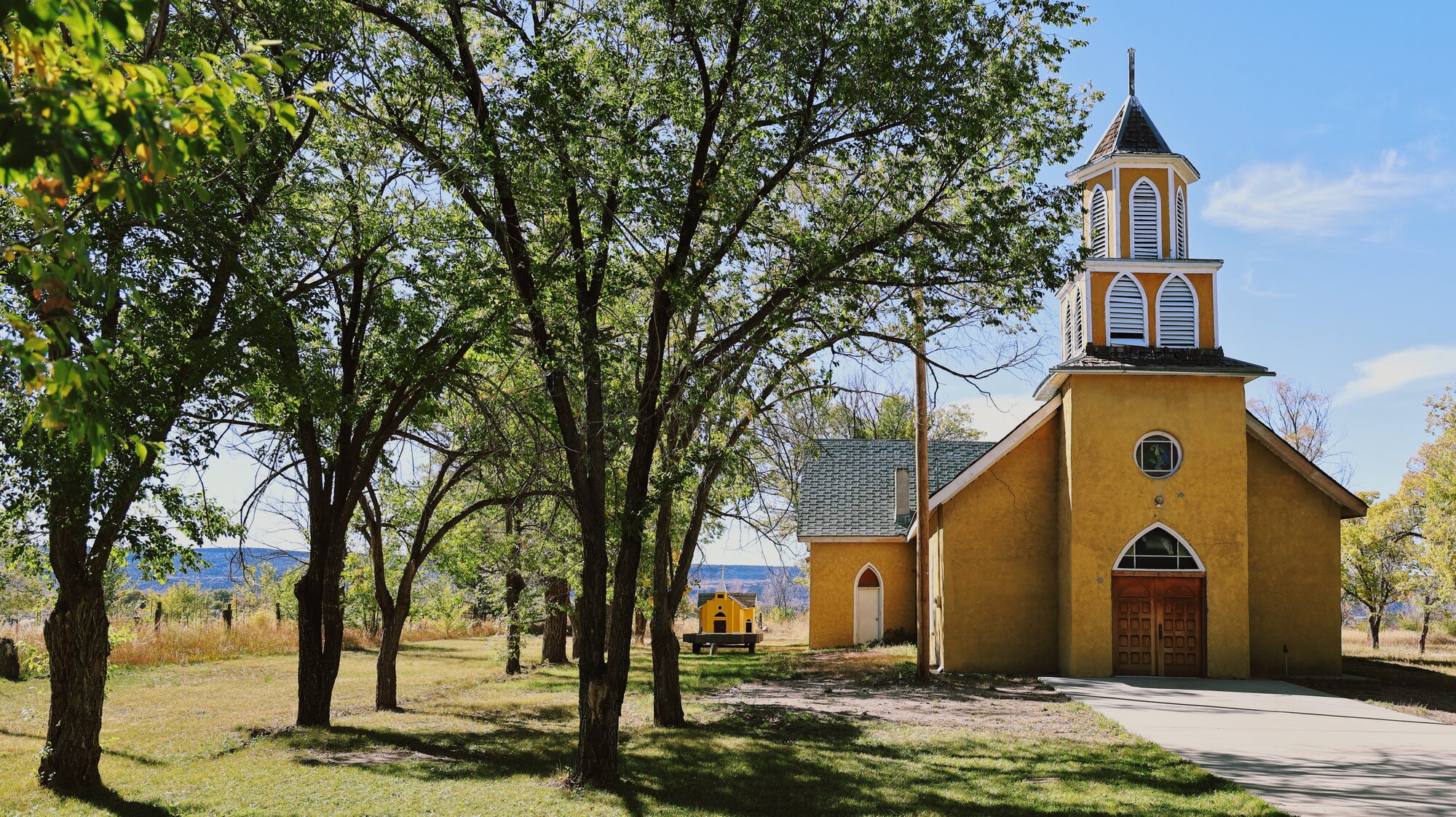
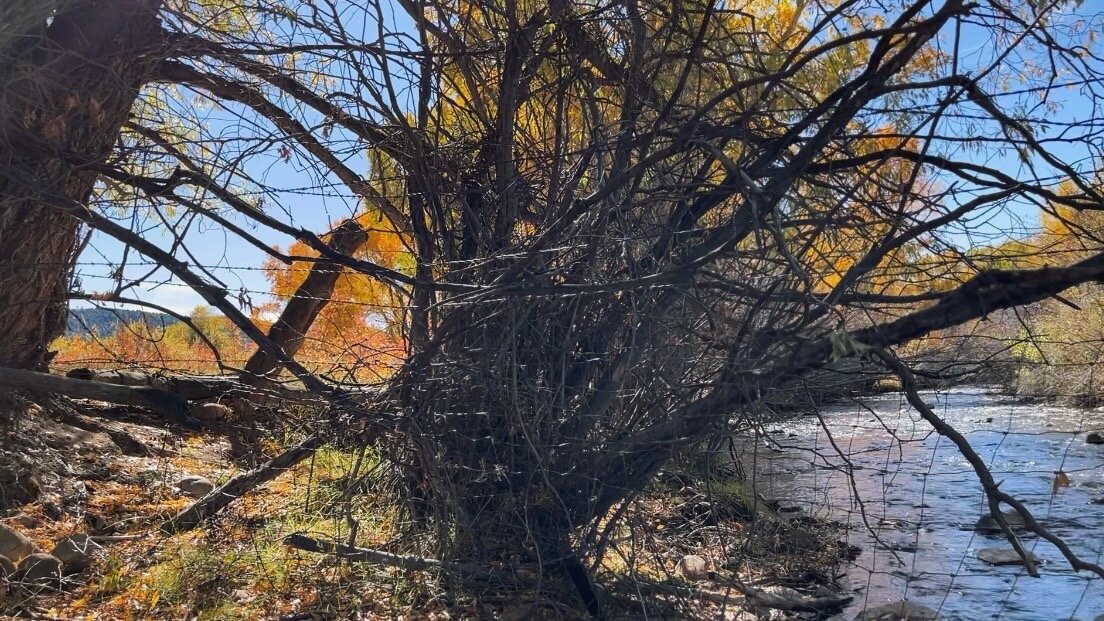
Martinez said none of the missions would exist without committed church caretakers in each community. The missions of San Pedro y San Pablo, Chama, Garcia, San Acacio, San Francisco, and San Isidro all rely on families who care for grounds and open the church for special services. Caretakers called Mayordomos coordinate paying the bills and maintenance.
At San Pedro y San Pablo, Mayordomo Carlos Atencio has been taking care of the mission’s basic needs for over twenty years.
“Mayordomos take care of the church,” Atencio said. “We make sure that things are set up when the when we have masses. We take care of the church yards. We take care of the electric bill.” Atencio also maintains the cemetery along with others on a community board.
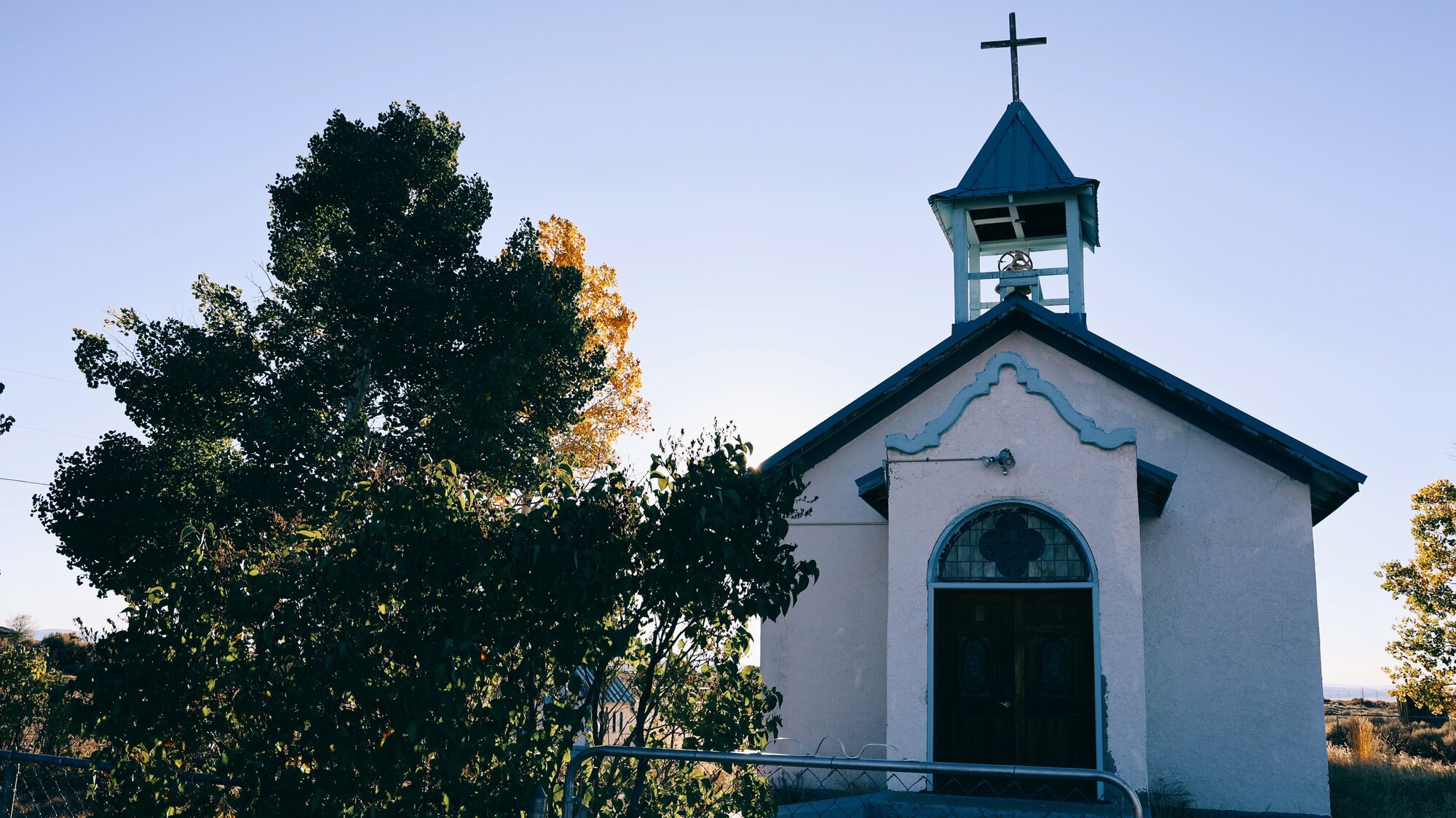
Sacred Heart Mission in Garcia.
Parishioners across the watershed have found creative ways to raise money for their local mission churches. Atencio crafts rosaries that he sells at markets across Colorado, giving half the proceeds to pay bills for the mission.
“That’s really the only fundraising that we have,” Atencio said. “It just doesn’t cover the cost of maintaining it.” While he pays the $35 a month electricity bill, Atencio acknowledged the diocese is paying an estimated $1800 a year for insurance because they can’t afford it.
“I know that the diocese doesn't really want to take care of this many churches,” Atencio acknowledged. “We have nine total churches in our community, and many of the churches are pretty much in the same shape and the same condition — if not the structure, then the decline in membership.”
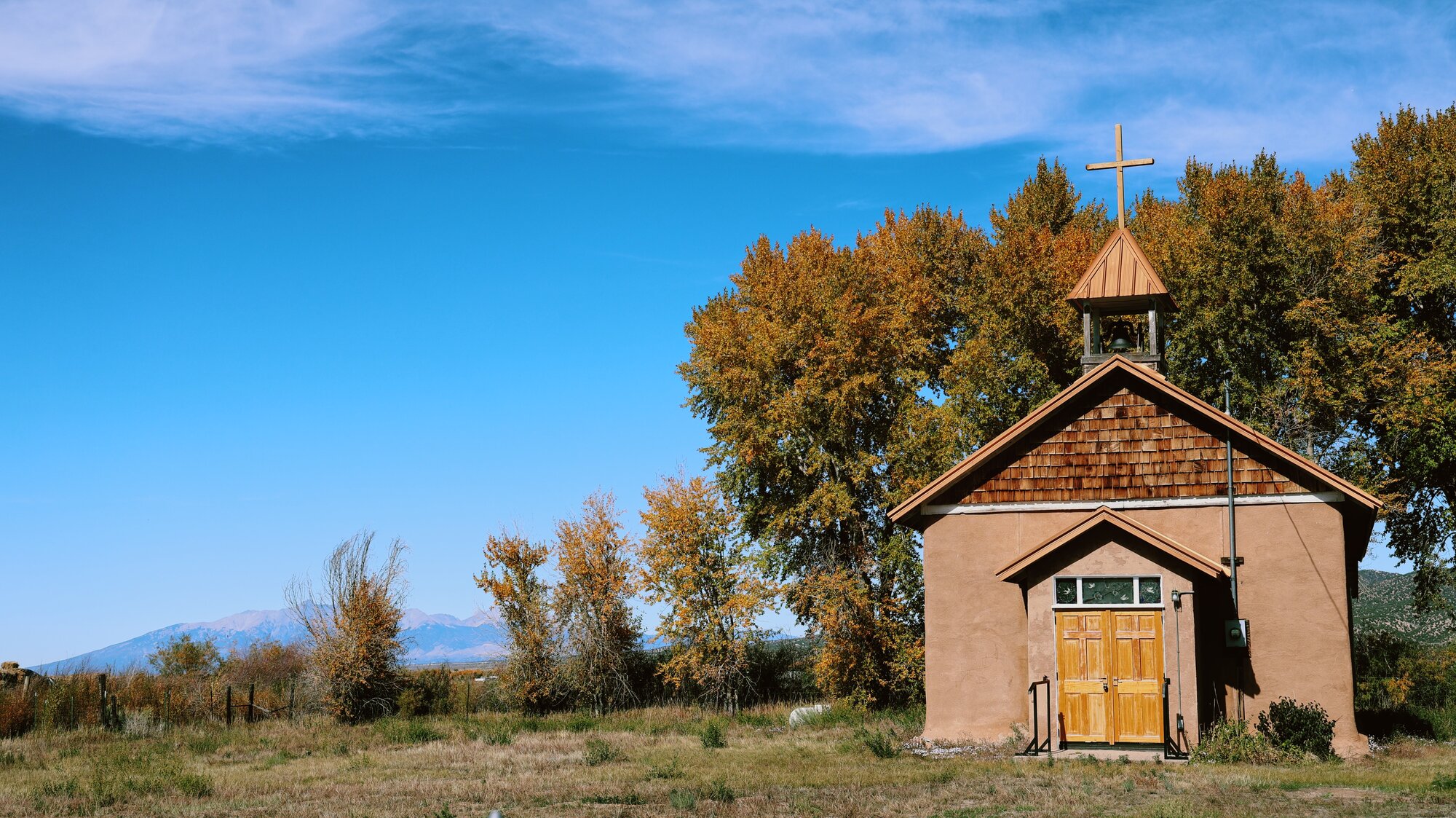
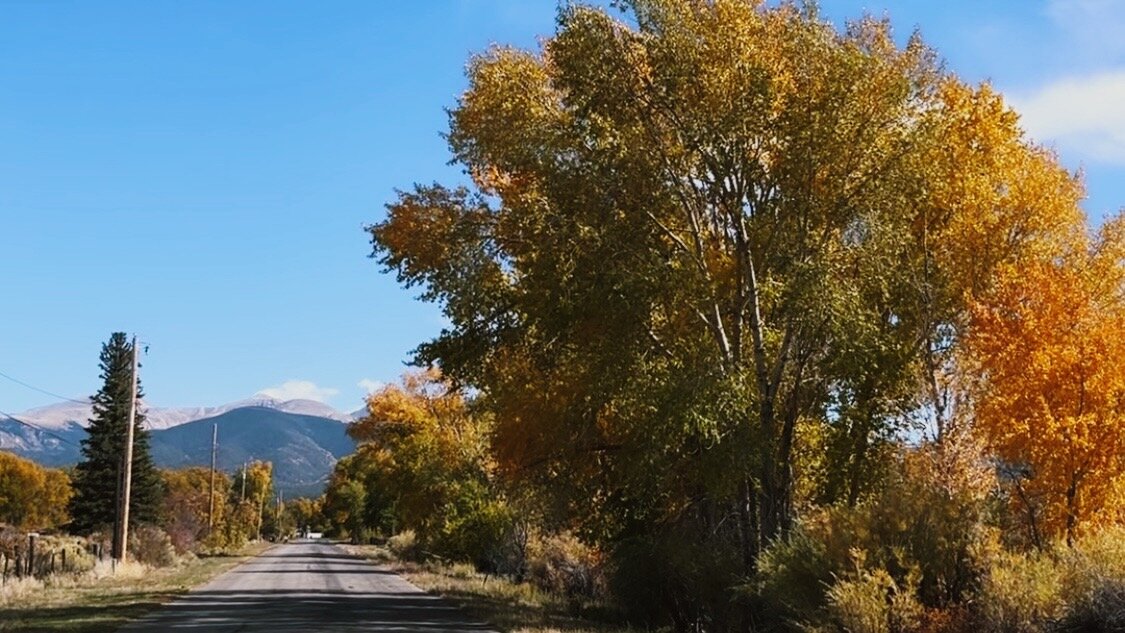
To reroof the San Isidro church and gazebo, Los Fuertes community member James Sanchez wrote a book about the history of the community. Proceeds from “Discovering Los Fuertes” funded the repairs. Churches including Chama, San Acacio and San Francisco have undergone extensive renovations and upgrades over the years from community craftsperson talents and donations.
Richard Garcia, who was born and raised in San Acacio, helps take care of the San Isidro church, paying its electric costs and opening the building when needed for mass. Garcia said his wife is from Los Fuertes, and they live a quarter mile from the San Isidro church, named after the patron saint of agriculture.
“This church was built in the late 1800s,” Garcia said, and described how the church was built along Vallejos Creek, the main irrigation channel for the community. “Our priest right now is Father John Farley, who is from Pueblo,” Garcia said. “There is a mass the third Sunday of every month at San Isidro, as well as at San Acacio.”
Garcia has been involved in the San Acacio and San Isidro churches his whole life and remains members of both. He explained that he drives the small replica of the San Isidro church displayed under the gazebo in the annual Santa Ana y Santiago parade through San Luis each July.
“We’ve got many important churches in the area,” Garcia said. “The Bishop, Stephen Berg from Pueblo, can probably do something to help. I am open-minded to do what needs to be done to whenever it comes to a point when we have to preserve the churches. There is money out there.”
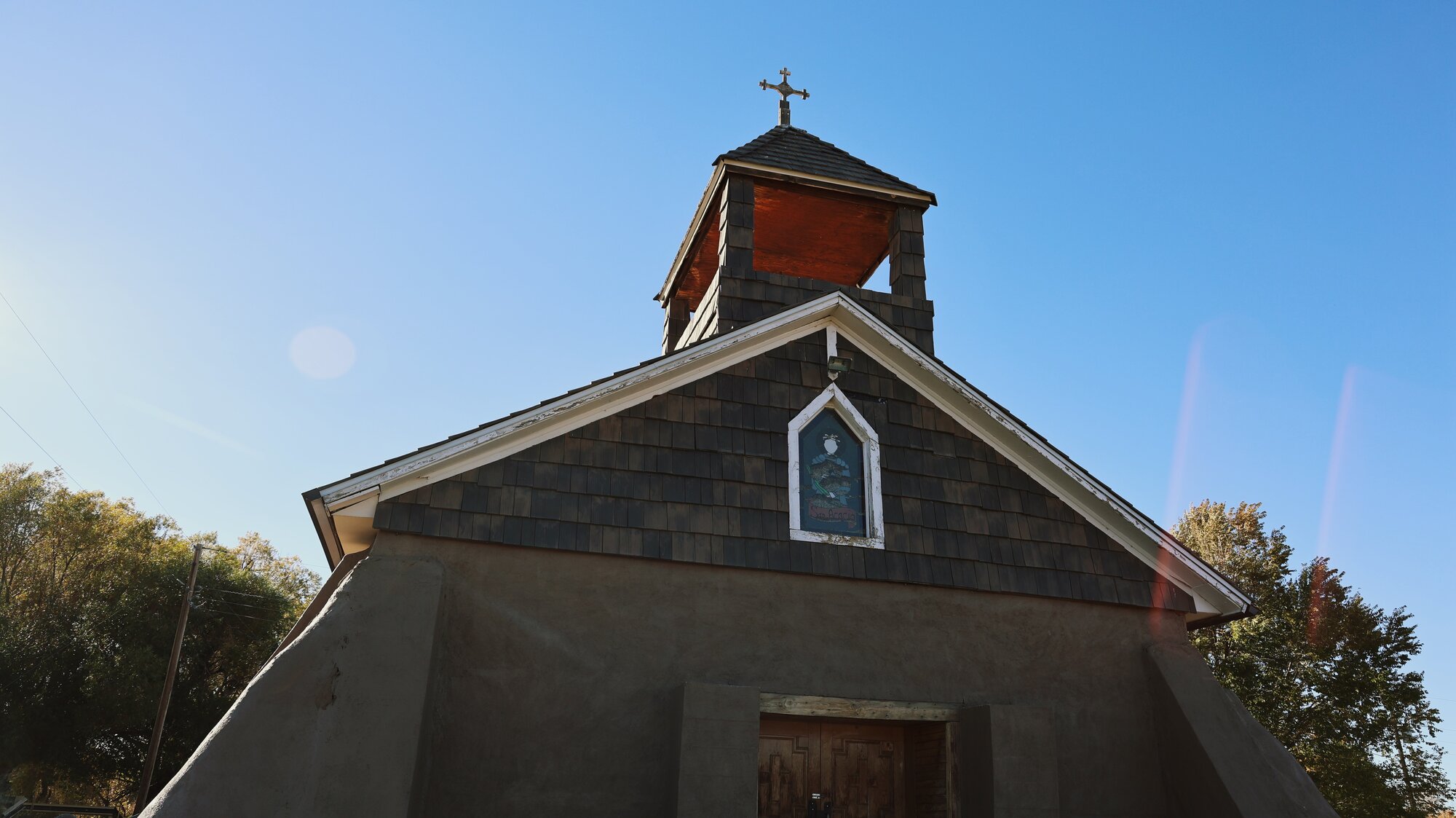
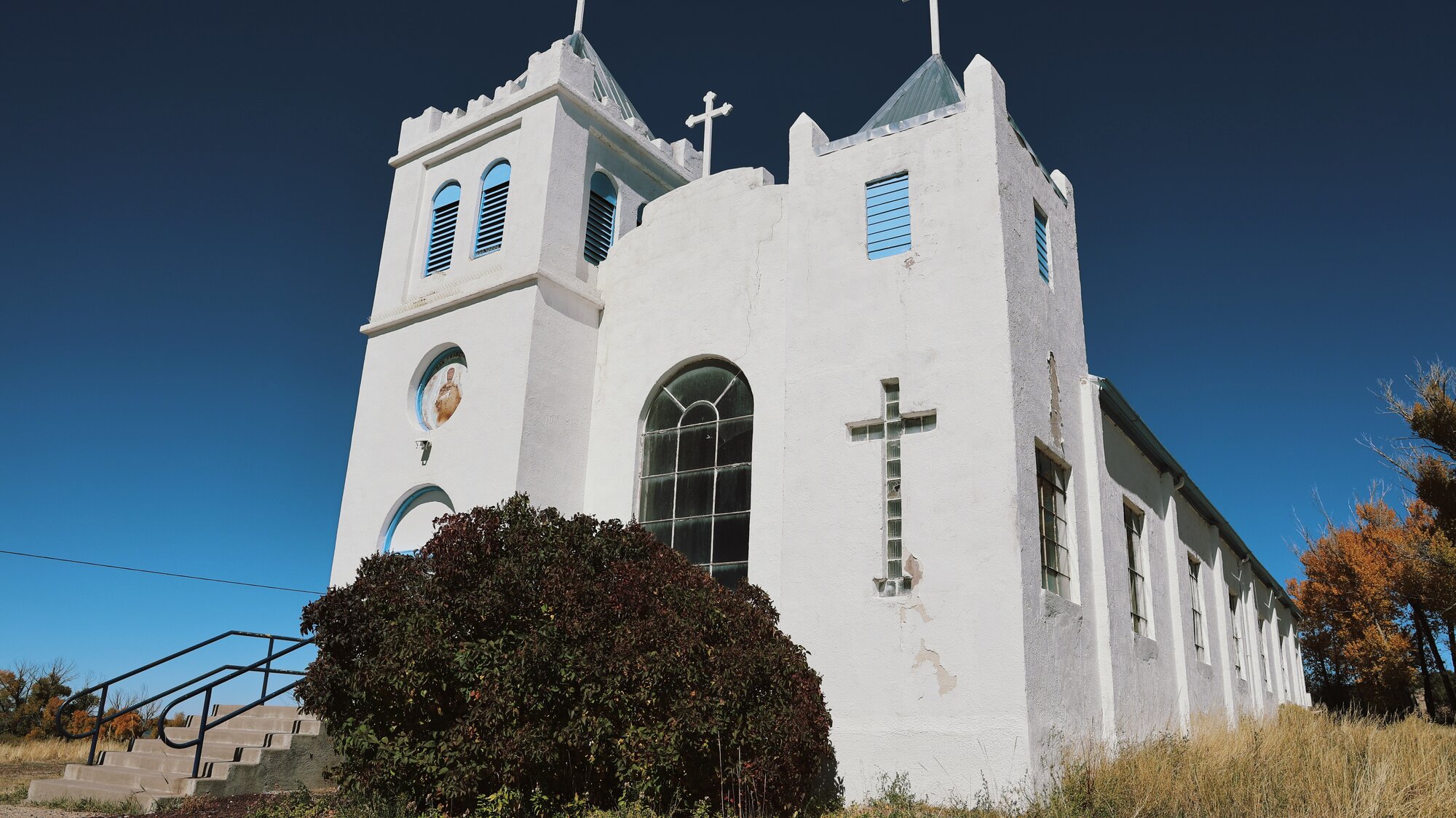
The Capilla de San Acacio Viejo, left, and San Francisco mission, right, have undergone major renovations in recent years under the time and talent of local families.
“It must be noted that all Catholic Churches in the San Luis Valley struggle financially and from a shortage of priests, endemic throughout the Diocese,” Bishop Berg said in his statement. “The Diocese of Pueblo remains committed to providing sacramental and pastoral care for the benefit of all. We appreciate the prayers and financial support of clergy, parishioners and all who care for our historical past as we move forward to address these concerns.”
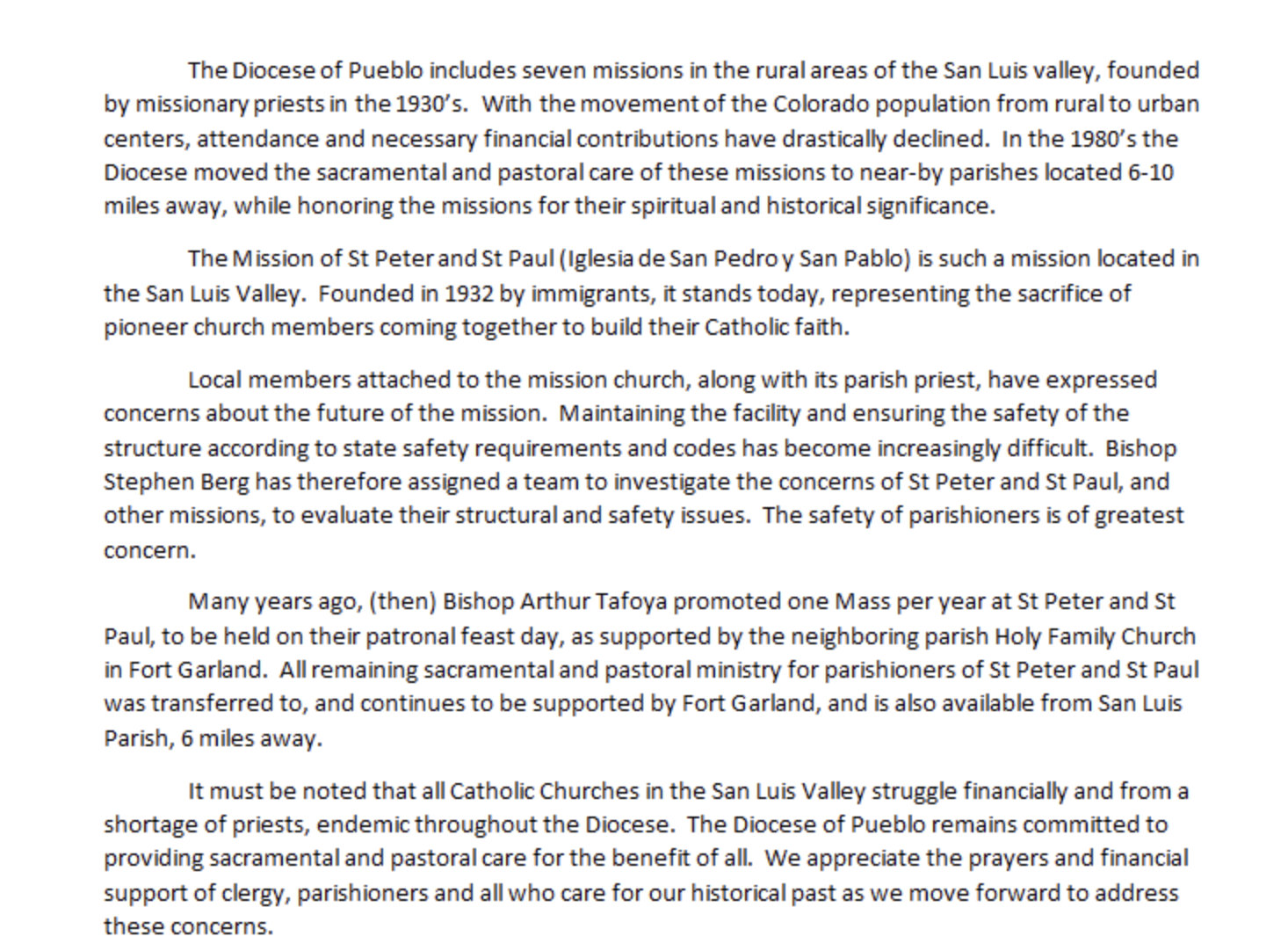
Statement from Biship Stephen Berg and the Diocese of Pueblo.
With uncertain Diocese support, responsibility is felt even more squarely on local shoulders. It’s clear that a passionate and talented population will keep fighting for repairs and maintenance of their local churches.
“We have a culture that we refuse to let go of,” Jaques said. “We're blessed that we live in this community. We're blessed that we have so many friends and neighbors. There's a magnetism, there's a certain magic about this place.”
“We're going to do everything in our power to try to raise the money to preserve this,” Martinez said.
Kate Perdoni is the Engagement Journalism Director at Rocky Mountain PBS. kateperdoni@rmpbs.org.
Archival slides of the mission churches, 1974: Iglesia de San Pedro y San Pablo; Capilla de Viejo San Acacio; Iglesia de San Francisco de Assi; Iglesia de la Inmaculada Concepción, Chama; Sacred Heart Mission, Garcia. [Marianne Stoller Papers, 1970-1995, Ms 0331, Box 9, Colorado College Special Collections.]
Mayordomo Carlos Atencio inside the Iglesia de San Pedro y San Pablo.
The Mission of San Pedro y San Pablo was listed on the National Register of Historic Places in 2012.
Below, Atencio points out structural issues with the church.
The Iglesia de la Inmaculada Concepción was built in 1935 in what was first called Culebra, then Nuestra Señora del Rosario, and finally, named Chama in 1907 after Chama, New Mexico.
The Culebra River
The Capilla de San Isidro was listed on the National Register of Historic Places in 2013.
Los Fuertes was settled beginning in the 1850s along irrigation laterals of the Vallejos river.